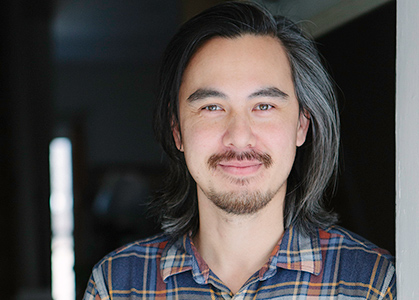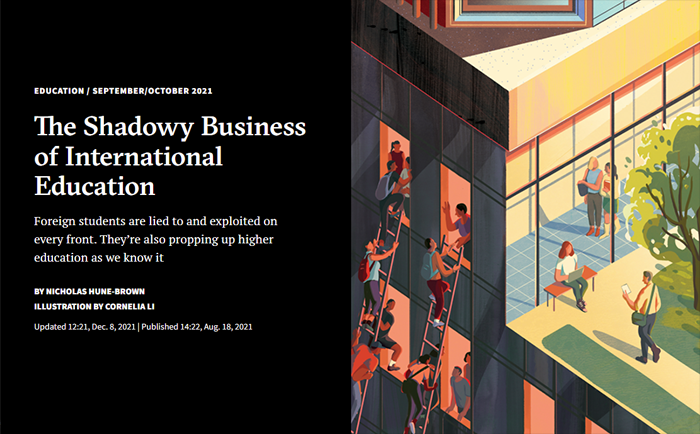2022 Canadian Hillman Prize Winner

Hune-Brown’s cover story for the September 2021 issue of The Walrus was an investigation into the world of international students, whose numbers in Canada have tripled in the last decade, bringing $21 billion into the economy—more than auto parts or lumber. The system is quietly transforming post-secondary institutions, which have become dependent on their tuition.
Many of us are aware of the stereotype of the well-off young international student, usually from mainland China, paying their way into top educational institutions. But this stereotype is now entirely divorced from reality. In 2019, 34 percent of the more than 642,000 international students in Canada were from India, well ahead of China’s 22 percent.

In India, families with small farms are betting everything on the possibility of permanent residency in Canada for their children, relying on largely unregulated education agents who make big promises about life here. The story documents their journey to Canada, the way these students are vulnerable to labour exploitation once they arrive, and the serious mental health risks they too often encounter, alone in a strange country with their entire family’s future dependent on their success. In some cases, the intense pressure, isolation and lack of support mean students are unable to complete their studies. Some never make it home, succumbing to drug overdoses and even suicide.
The growing body of international students has also created a massive labour force ripe for exploitation. Sarom Rho, an organizer with Migrant Students United, an offshoot of the advocacy group Migrant Workers Alliance for Change, says “We call them migrant students, not international students.” By law, students can work only twenty hours off campus a week. But, in reality, students are desperate to pay rent and often end up working under the table which puts them at the total mercy of their employers, working below minimum wage or not being paid at all.
Hune-Brown’s article was one of the most-read stories of the year from The Walrus. It sparked conversations in college classrooms and amongst post-secondary administrators, invitations to speak at campuses across the country and at conferences for university executives and international student groups. It inspired follow-up pieces in both in mainstream newspapers and in media outlets catering to newcomers, which continue to follow the story.
Hune-Brown brings this many-layered story to life by taking us along on the journey of one such student, Kushandeep Singh. The reader follows Singh’s path from a tiny village in northern India to studying at KPU in British Columbia to Winnipeg, Manitoba adding a deeply personal layer to a sharply focused investigative piece.
The power of Hune-Brown’s hard-hitting yet compassionate storytelling, and the breadth and depth of this original investigation truly embodies the spirit of the Hillman prize.
Nicholas Hune-Brown is a Toronto-based journalist and the senior editor at The Local Magazine. He’s a multiple-time National Magazine Award winner who has written features for The Walrus, Toronto Life, The Guardian, Hazlitt, and many others. He writes on all kinds of subjects—from features about homelessness and assisted suicide, to deep dives into a dissident Chinese dance troupe or the lives of captive elephants.

